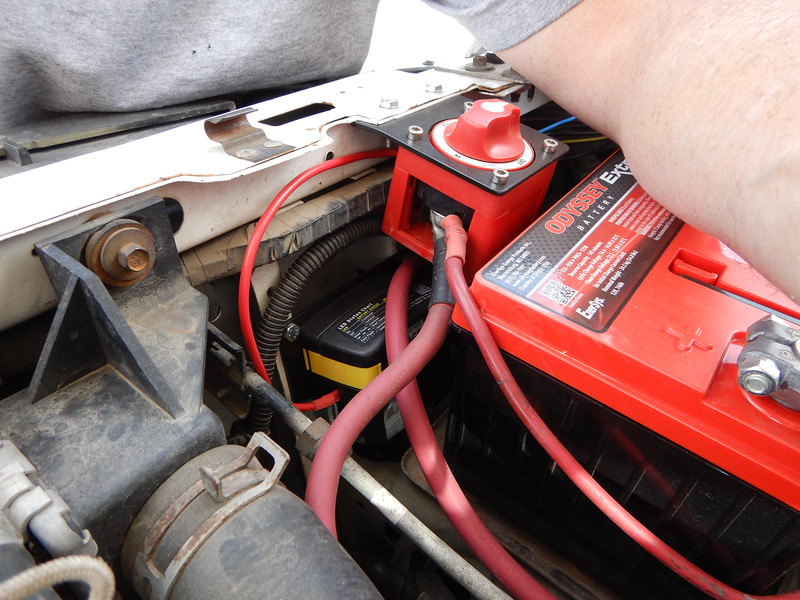Truck is a 1990 22RE. Canadian version, although that doesn't change too many things. I've done a bunch of searches on here and other sites, and I'm working from my FSM. I'm not excellent with electrical, but slow and careful. I can use some other eyes to confirm what I'm seeing in the FSM. First, I'm trying to return my alternator wiring to stock. Second, I want to duplicate the alternator circuits to run a second alternator to charge a house battery. Longer term goal during a pandemic. Alternator that is currently in there is likely a Tacoma alternator from a 1995/6 or so. Different plug but similar alternator output. Works, but seems to put out more than 14.4 volts, or voltmeter is off, maybe. Original plug should look like this:

1. Red wire is 16 gauge? Goes to 10amp fuse in driver's side kick panel. Ties into Ign and turns alternator on, correct? This is part of circuit marked "F" in FSM. When ignition is on, it connects to "B" circuit, upstream of 80Amp Alt fuse (underwood fuse box), which is upstream of fusible link to battery positive post.
2. White wire is sensor wire. 14/12 gauge? Goes from alt plug above to "D" circuit. D circuit goes to large fuse in underwood box marked AM1, 40 amps. Then it connects or splices into B circuit upstream of 80amp alt fuse. I can't see exactly how it is spliced, because I think it is under the box.
3. Yellow wire from plug. 14/12 gauge? goes to 7.5 amp fuse underwood marked Charge. Correct? Then it goes to charge warning light and to IGN fuse 7.5 amp in DS kick panel? Also connected to 10amp fuse for gauges? Like voltmeter. Then ties into "G" circuit, goes to IG 2, then to AM2 Fuse (30 amps), then connects or splices before fusible link? This part is the most confusing. Can alternator run without this? Only sacrifices warning systems? or alt won't run without this?
4. Big wire from Alt marked Batt. Not shown. Looks about 10 gauge. Runs up under air intake box. Spliced through small black box on DS fender where one branch runs accessories? Main wire runs along front clip over radiator to fuse box, through 80amp alt fuse, to fusible link, to Batt + post.
Small black dots are splices or connectors in FSM? or both? Best way of connecting wire to wire?
Any major errors that will cause shorts or fires? I will eventually post in power systems as well, since that's where this is headed.
1. Red wire is 16 gauge? Goes to 10amp fuse in driver's side kick panel. Ties into Ign and turns alternator on, correct? This is part of circuit marked "F" in FSM. When ignition is on, it connects to "B" circuit, upstream of 80Amp Alt fuse (underwood fuse box), which is upstream of fusible link to battery positive post.
2. White wire is sensor wire. 14/12 gauge? Goes from alt plug above to "D" circuit. D circuit goes to large fuse in underwood box marked AM1, 40 amps. Then it connects or splices into B circuit upstream of 80amp alt fuse. I can't see exactly how it is spliced, because I think it is under the box.
3. Yellow wire from plug. 14/12 gauge? goes to 7.5 amp fuse underwood marked Charge. Correct? Then it goes to charge warning light and to IGN fuse 7.5 amp in DS kick panel? Also connected to 10amp fuse for gauges? Like voltmeter. Then ties into "G" circuit, goes to IG 2, then to AM2 Fuse (30 amps), then connects or splices before fusible link? This part is the most confusing. Can alternator run without this? Only sacrifices warning systems? or alt won't run without this?
4. Big wire from Alt marked Batt. Not shown. Looks about 10 gauge. Runs up under air intake box. Spliced through small black box on DS fender where one branch runs accessories? Main wire runs along front clip over radiator to fuse box, through 80amp alt fuse, to fusible link, to Batt + post.
Small black dots are splices or connectors in FSM? or both? Best way of connecting wire to wire?
Any major errors that will cause shorts or fires? I will eventually post in power systems as well, since that's where this is headed.

